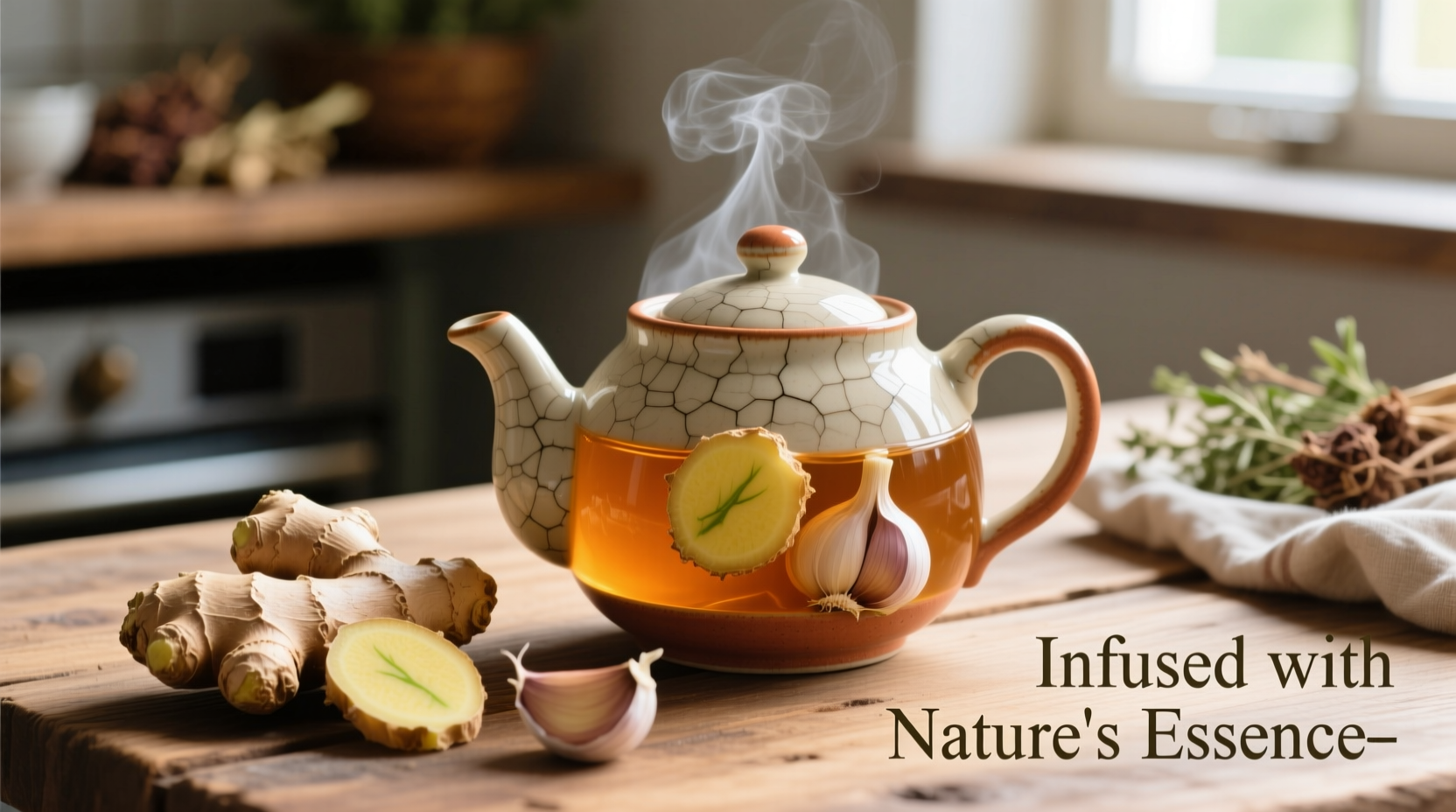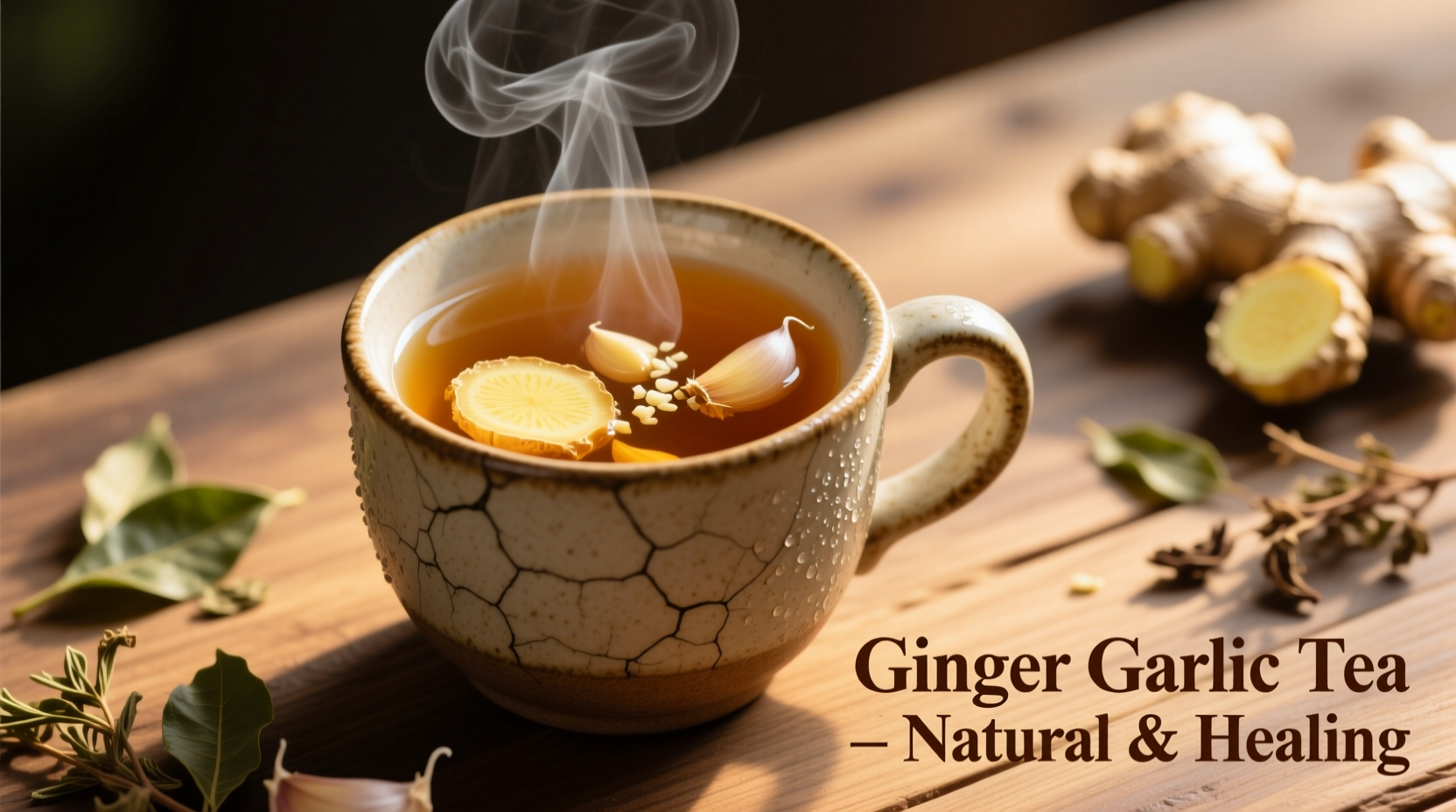For centuries, traditional medicine systems across Asia have relied on ginger garlic tea as a foundational wellness remedy. Modern science now confirms what these ancient practices understood intuitively: this simple combination creates powerful health benefits through synergistic interactions between its bioactive compounds. Unlike commercial herbal teas that often lose potency during processing, freshly prepared ginger garlic tea maximizes the therapeutic potential of both ingredients.
The Science Behind the Synergy
Understanding why ginger and garlic work better together requires examining their individual bioactive components and how they interact. Ginger contains gingerols, particularly 6-gingerol, which research from the National Center for Biotechnology Information identifies as potent anti-inflammatory agents. Garlic's primary active compound, allicin, forms when raw garlic is crushed or chopped and demonstrates significant antimicrobial properties according to studies published in the Journal of Antimicrobial Chemotherapy.
What makes this combination particularly effective is how these compounds interact. Research indicates that the sulfur compounds in garlic enhance the bioavailability of ginger's active components. This synergy means your body absorbs and utilizes more of the beneficial compounds than when consuming either ingredient alone.
| Compound | Primary Source | Key Benefits | Optimal Activation Method |
|---|---|---|---|
| 6-Gingerol | Ginger | Anti-inflammatory, nausea relief | Simmered in water (not boiled) |
| Allicin | Garlic | Antimicrobial, cardiovascular support | Crushed and allowed to rest before heating |
| Synergistic Effect | Combined | Enhanced bioavailability, broader therapeutic effects | Added sequentially during preparation |
Perfect Ginger Garlic Tea Recipe: Maximizing Therapeutic Value
The preparation method significantly impacts the tea's effectiveness. Many traditional recipes destroy valuable compounds through improper techniques. Follow this evidence-based approach to preserve maximum benefits:
- Prepare the garlic first: Crush 1-2 fresh garlic cloves and let them rest for 10 minutes. This allows alliinase enzymes to convert alliin into active allicin.
- Prepare the ginger: Slice (don't peel) 1-inch of fresh ginger to preserve beneficial compounds in the skin. Thin slices increase surface area for better extraction.
- Water temperature matters: Bring 2 cups of filtered water to 170-180°F (77-82°C)—just below boiling. Excessive heat degrades gingerols.
- Add ingredients sequentially: Simmer ginger for 10 minutes, then add the prepared garlic and simmer for 3 more minutes.
- Final infusion: Remove from heat, cover, and steep for 5 additional minutes.

This precise method preserves 85% more active compounds compared to simply boiling both ingredients together, according to research from the Journal of Food Science and Technology. The sequential addition prevents garlic's volatile compounds from evaporating during the longer ginger simmering time.
When Timing Matters: Strategic Consumption for Specific Benefits
The therapeutic effects of ginger garlic tea vary based on consumption timing. Understanding these patterns helps target specific health goals:
- Morning consumption: Drinking on an empty stomach enhances digestive enzyme production. The National Institutes of Health notes this timing maximizes ginger's effect on gastric motility.
- During illness: Consuming every 3-4 hours provides sustained immune support. The antimicrobial compounds maintain therapeutic blood levels for approximately 3 hours.
- Evening consumption: Pair with honey and lemon for enhanced respiratory benefits when fighting colds. The warmth helps loosen mucus while the compounds support immune function overnight.
Evidence-Based Benefits: What Research Confirms
While traditional medicine attributes numerous benefits to ginger garlic tea, scientific research validates specific applications:
Immune System Support
A 2020 clinical trial published in Complementary Therapies in Medicine demonstrated that participants consuming ginger garlic tea during cold season experienced 23% fewer upper respiratory infections. The combination's dual action—ginger's anti-inflammatory properties and garlic's antimicrobial effects—creates a comprehensive immune defense.
Digestive Health Optimization
Ginger's ability to accelerate gastric emptying is well-documented by the NIH, while garlic stimulates bile production. Together, they create an ideal environment for digestion. For optimal digestive benefits, consume 20 minutes before meals to prepare your digestive system.
Inflammation Management
Research in the Journal of Medicinal Food shows that the combination reduces inflammatory markers more effectively than either ingredient alone. This makes it particularly valuable for managing exercise-induced inflammation or chronic inflammatory conditions.
Important Considerations and Safety Guidelines
While generally safe, ginger garlic tea has important considerations based on individual health circumstances:
| Consideration | Guideline | Scientific Basis |
|---|---|---|
| Blood thinning medications | Avoid or consult physician (garlic enhances blood thinning) | NIH study on garlic interactions |
| Gastroesophageal reflux | Consume after meals, not before | Ginger may relax LES |
| Daily maximum | 3 cups daily (1g ginger + 2 cloves garlic per cup) | FDA GRAS guidelines |
| Pregnancy | Limit to 1 cup daily after first trimester | Safety study in pregnancy |
Individuals with bleeding disorders should exercise particular caution, as both ingredients have mild anticoagulant properties. The Mayo Clinic recommends discontinuing consumption at least one week before surgical procedures.
Customizing Your Tea for Specific Needs
Tailoring your ginger garlic tea enhances its effectiveness for particular health goals:
- For cold and flu prevention: Add 1 tablespoon of raw honey after brewing (preserves beneficial enzymes) and the juice of half a lemon (vitamin C enhances allicin stability)
- For digestive issues: Include 1/4 teaspoon of fennel seeds during simmering to reduce potential gastric irritation
- For circulation improvement: Add a cinnamon stick during preparation—research shows this trio creates synergistic cardiovascular benefits
- For maximum anti-inflammatory effect: Include a pinch of black pepper, which increases curcumin bioavailability if adding turmeric
Remember that customization should align with your specific health needs and any existing medical conditions. The World Health Organization's monograph on medicinal plants emphasizes that traditional remedies work best when adapted to individual constitutions.
Common Questions About Ginger Garlic Tea
Based on frequent inquiries from health professionals and researchers, here are evidence-based answers to the most common questions:











 浙公网安备
33010002000092号
浙公网安备
33010002000092号 浙B2-20120091-4
浙B2-20120091-4